The Power of Digital Spaces and People at Ayala Museum
Written by Aprille Tijam, Senior Manager, Exhibitions and Collections, Ayala Museum (ITP 2019, Philippines)
Audience engagement at Ayala Museum in the Philippines took a historical pivot when COVID-19 pandemic happened in 2020. In my blog Collections Access in the time of COVID-19 (2020), I shared my museum’s journey from on-site and existing online presence to a more engaging virtual experience in response to the pandemic situation. But prior to that, my colleagues from Ayala Museum-Curatorial, Filipinas Heritage Library, and the Information and Communications Technology teams have been working together since Q3 of 2019 on creating another digital space in the newly renovated Ayala Museum. This digital space is what we now call as the Digital Gallery welcoming our guests at the lobby designed by Tokyo-based Studio Taku Shimizu. The Digital Gallery was launched in December 2021.
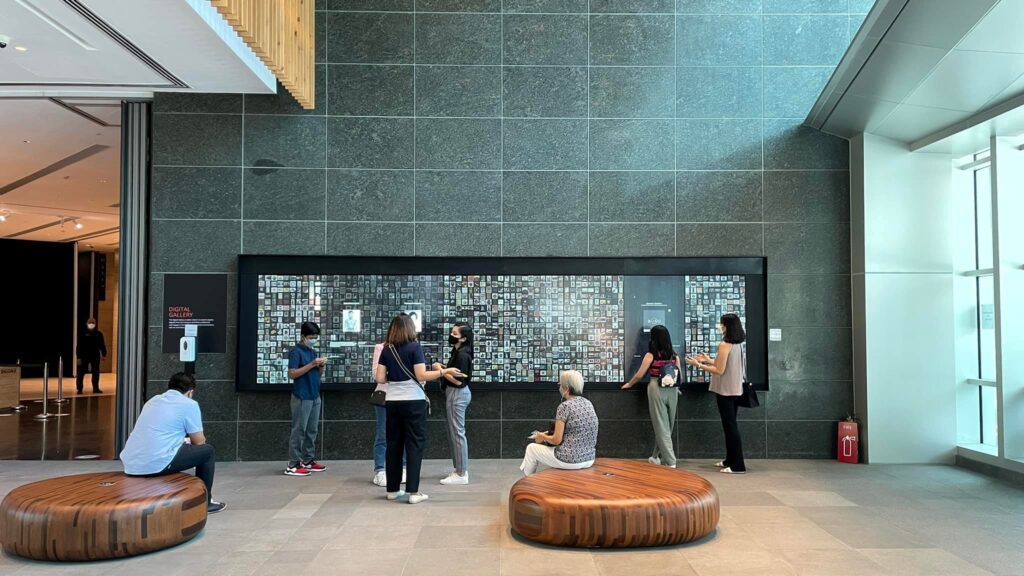
PHOTO COURTESY OF AYALA MUSEUM
TAKEN DURING INTERNATIONAL MUSEUM DAY 2022 CELEBRATION (MAY 27, 2022)
More than 90% of the Ayala Museum collection was in storage or was not for public viewing prior to the 2019 renovations. Through this digital gallery, visitors of all ages can now access more information and high-resolution images of 1,000 objects, artworks, and publications not only from the Ayala Museum collection but from the Filipinas Heritage Library collection as well that which is housed on the sixth floor of the Ayala Museum. The first of its kind in the Philippines, this digital space introduces an interactive platform for a digital dialogue with the objects, “up close and personal,” on eight screens forming one big screen. With a touch of a finger, images can be enlarged to 2,920 pixels maximum height for tall images while wide images can be viewed at 2,080 pixels maximum width, inviting closer scrutiny of the patterns, strokes, or craftmanship.
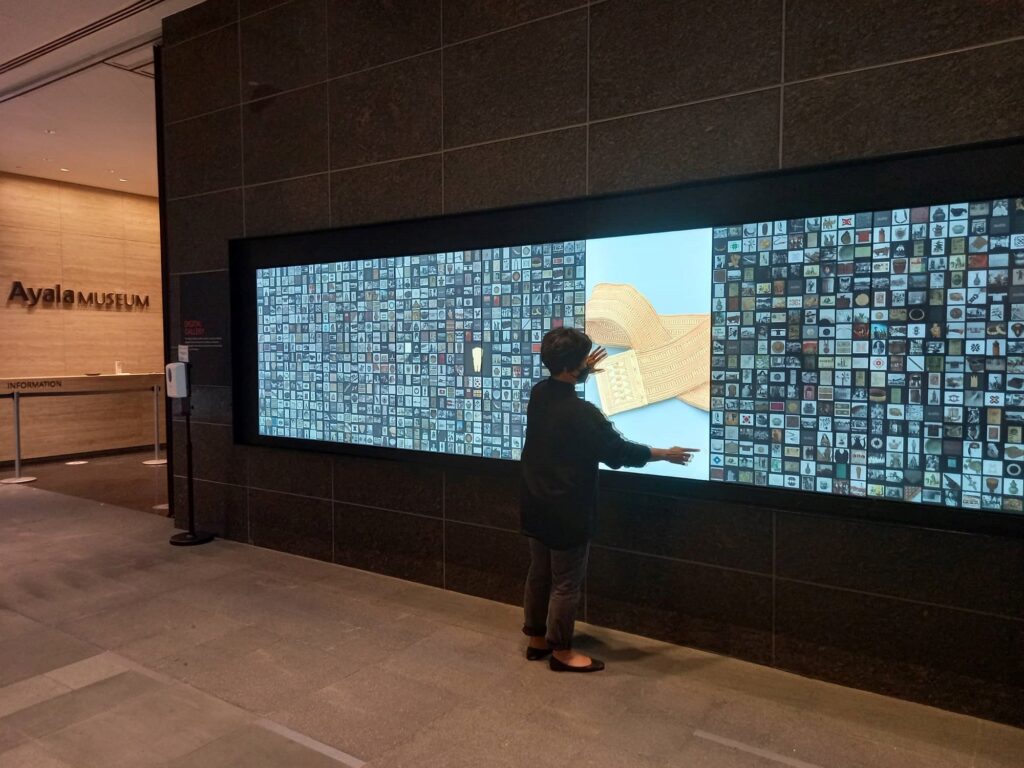
PHOTO BY REX CABUGON
This level of engagement allows guests the opportunity “to digitally touch” when most of these objects, while on exhibit, are “hands-off” to guests. Each object is contained in a “placemat” detailing the basic identification for each artist or maker, title, medium, dimension, period made, its current location (in storage, on exhibit, on loan), with accompanying images offering different angles or details, and a 100-word description. Our teams worked on the design development with Local Projects (User Experience and Design) and Piction (Programming and Digital Assets Management System).
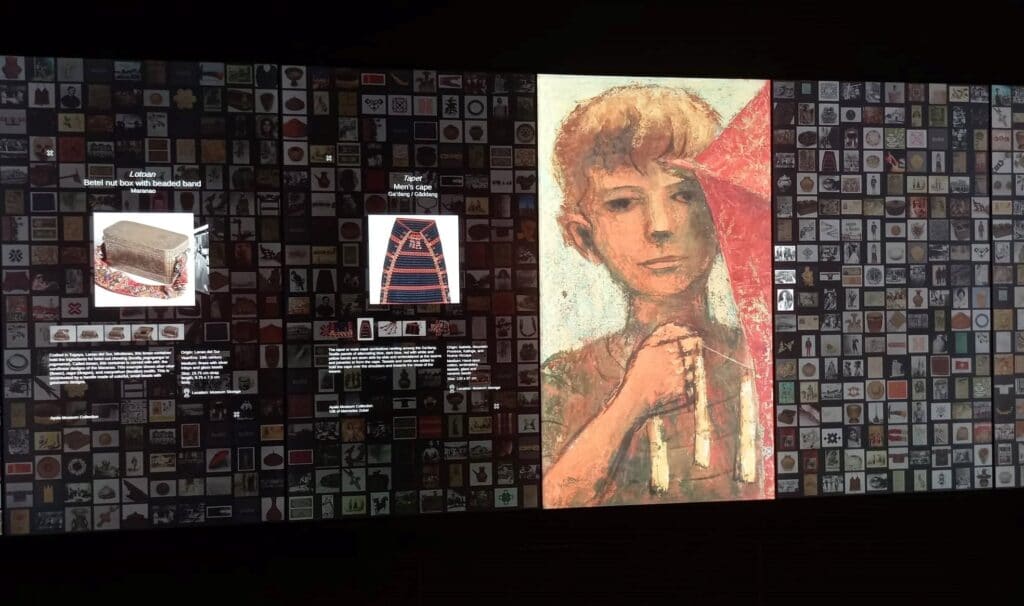
“PLACEMATS” FOUND AT LEFT OF “BOY WITH KITE” (1952) PAINTING BY FERNANDO ZOBEL (1924-1984) FROM THE AYALA MUSEUM COLLECTION. PHOTO BY APRILLE TIJAM
The contents were carefully organised to feature fine arts, ethnographic, archaeological, numismatics, historical, musical scores, periodicals, ecclesiastical, and more. These were selected based on significance in the collection, never exhibited or featured in any publication, rarity, visual impact. The 100-word description passed through rigorous reviews considering the veracity of the information and its readability. Five writers from the Ayala Museum and five from Filipinas Heritage Library crafted the significance of each object based on the following themes—vanity, travel and voyage, worship, daily life, artistic expressions, power and bravery, death and survival, and nation building. These are stories that illustrate the history, arts, and culture of the Filipino people.
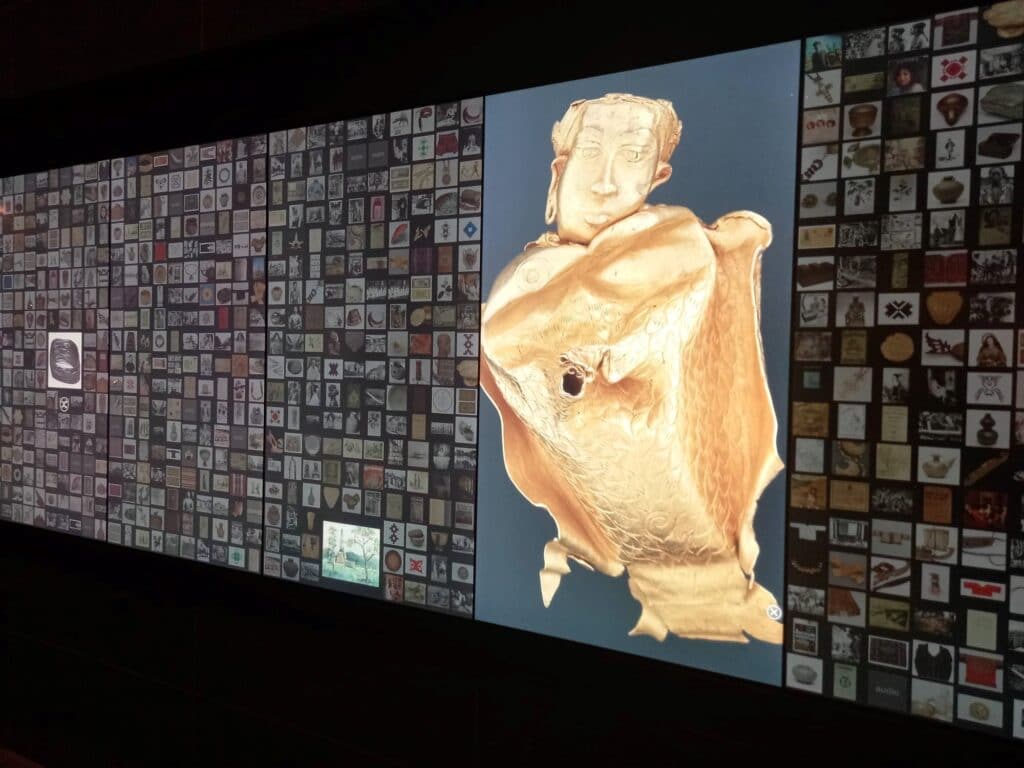
Caption: IMAGE OF “KINNARI,” FEATURED IN THE PERMANENT EXHIBITION “GOLD OF ANCESTORS: PRE-COLONIAL TREASURES IN THE PHILIPPINES.” https://www.ayalamuseum.org/collection/9111337
PHOTO BY APRILLE TIJAM.
As one of the core members-writers for the Ayala Museum collection, it was refreshing to revisit our collection and deliberate on the selection of five hundred objects and artworks to be featured. It was an opportunity to take the perspective of a visitor—explorer, artist/collector, experience-seeker, among others. And ask the questions—what do I wish to know about this object? What is its function? Who is entitled to use it? Who made it? Why was it made?
This process required thorough research which was faced with major challenges in 2020— working from home means no access to publications in our reference library, not all references are digitised and available online, no opportunity for an in-person study of the object or “reading the artifact”. Thus, the six-level review process—research and write, review (readability), rewrite, review (scholarship), rewrite, review and finalise—helped a lot in verifying the information written for each object and evaluate the impact of the interpretation to future guests. Equipped with their experiences with audience reactions and expectations, the Audience Development team was also engaged in the review process. And while we were fortunate to have high-resolution images of the majority of the objects selected readily available prior to the pandemic, as a result of the gradual and steady process of the digitalization of our collection over the years, the processes undertaken — to select the appropriate image from hundreds on file, resize, rename, tag to suit the desired functionality — still required thousands of hours of undertaking by our data managers.
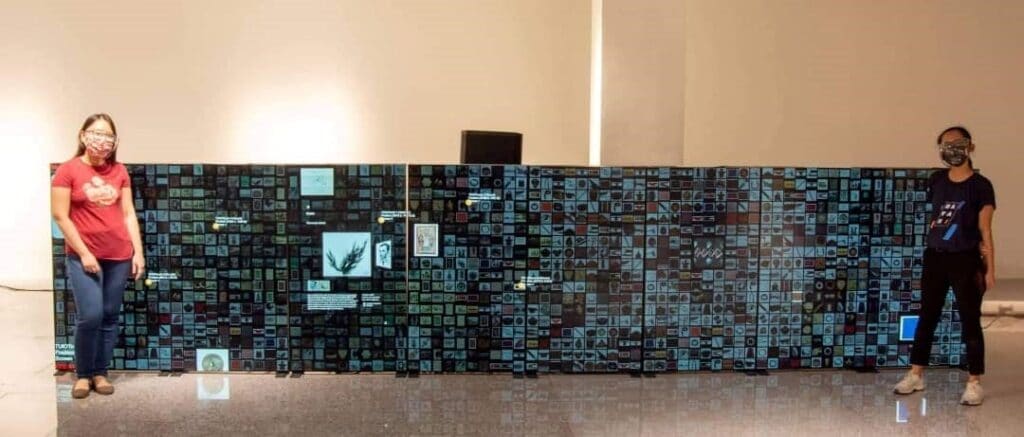
PROJECT LEADS OF THE DIGITAL GALLERY PREPARATIONS—CECIL AYSON OF FILIPINAS HERITAGE LIBRARY (LEFT) AND KAM OMOLIDA OF THE AYALA MUSEUM-CURATORIAL TEAM (RIGHT).
PHOTO COURTESY OF KAM OMOLIDA.
Thus, this programme is a testament to the perseverance of our team to accomplish the meticulous processes of metadata preparations, research and writing, and collaborations with internal and external parties. These were all undertaken amidst the lockdowns in the Philippines and fear for health in the time of pandemic, greatly affecting the timeline, onsite work such as installation and technical dry-runs, and content analyses. The hard work and dedication of the teams behind the Digital Gallery have fueled and ushered towards the completion of this digital innovation, making use of the Ayala Museum and Filipinas Heritage Library’s digital assets and available technology, to offer another digital space experience in the newly renovated Ayala Museum.
